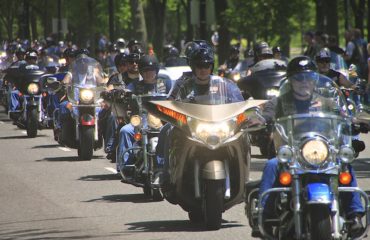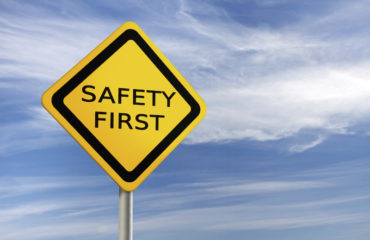
Always wear a DOT-Compliant helmet and safety gear.
Motorcyclists will be out in force as the weather gets warmer, which is why May is the perfect month for Motorcycle Safety Awareness. Fatal crashes with motorcycles are on the rise, and helmet usage is on the decline so all motorists need to know how to anticipate and respond to motorcyclists to avoid fatal crashes.
Share the Road
Motorcycle Safety Awareness Month is designed to encourage all drivers and motorcyclists to “share the road” with each other. In 2014, 4,586 motorcyclists were killed in traffic crashes, a decrease of 2.3 percent from 2013 (4,692). Those deaths account for 14 percent of the total highway fatalities that year. This decrease in motorcycle fatalities continues to break a tragic trend over the last 17 years, which saw only one other decline in 2009. Injured motorcyclists also decreased from 93,000 in 2013 to 88,000 in 2014.
The National Highway Traffic Safety Administration (NHTSA) estimates that 1,630 lives were saved in 2014 because of proper helmet usage, but another 715 lives could have been saved if helmets had been worn.
Wearing a helmet is an important way for a motorcyclist to stay safe, but we all play a part. It’s up to all motorists and motorcyclists to make our roads safer. It’s especially important for motorists to understand motorcycle safety challenges such as size and visibility, and riding practices like downshifting and weaving to be able to anticipate and respond to motorcyclist behavior.
Safe riding practices and cooperation from all road users will help reduce the number of fatalities and injuries on our nation’s highways. By raising motorists’ awareness, both drivers and riders will be safer sharing the road.
General Tips for Drivers
Sadly, research and state-level data consistently identifies motorists as being at-fault in over half of all multi-vehicle motorcycle-involved collisions with people behind the wheels of passenger vehicles distracted more than 50 percent of the time. Remember:
- Though a motorcycle is a small vehicle, its operator still has all the rights of the road as any other motorist. Allow the motorcycle the full width of a lane at all times.
- Always signal when changing lanes or merging with traffic.
- If you see a motorcycle with a signal on, be careful: motorcycle signals are often non-canceling and could have been forgotten. Always ensure that the motorcycle is turning before proceeding.
- Check all mirrors and blind spots for motorcycles before changing lanes or merging with traffic, especially at intersections.
- Always allow more follow distance – three to four seconds – when behind a motorcycle. This gives them more time to maneuver or stop in an emergency.
- Never drive distracted or impaired.
Tips for Motorcyclists
Motorcyclists must also take precautions to remain safe on the road. Remember that alcohol and riding a motorcycle should never be mixed together. Forty-three percent of the 2,030 motorcycle riders who died in single-vehicle crashes in 2013 had BAC levels of .08 or higher. Sixty-four percent of those killed in single-vehicle crashes on weekend nights had BACs of .08 or higher.
The following steps can increase motorcyclists’ safety:
- Wear a DOT-compliant helmet and other protective gear.
- Obey all traffic laws and be properly licensed.
- Use hand and turn signals at every lane change or turn.
- Wear brightly colored clothes and reflective tape to increase visibility.
- Ride in the middle of the lane where you will be more visible to drivers.
- Never ride distracted or impaired.
By following basic safety rules, we can all help prevent crashes. The message for all drivers and riders: Share the responsibility of keeping our roads safe—always share the road.







